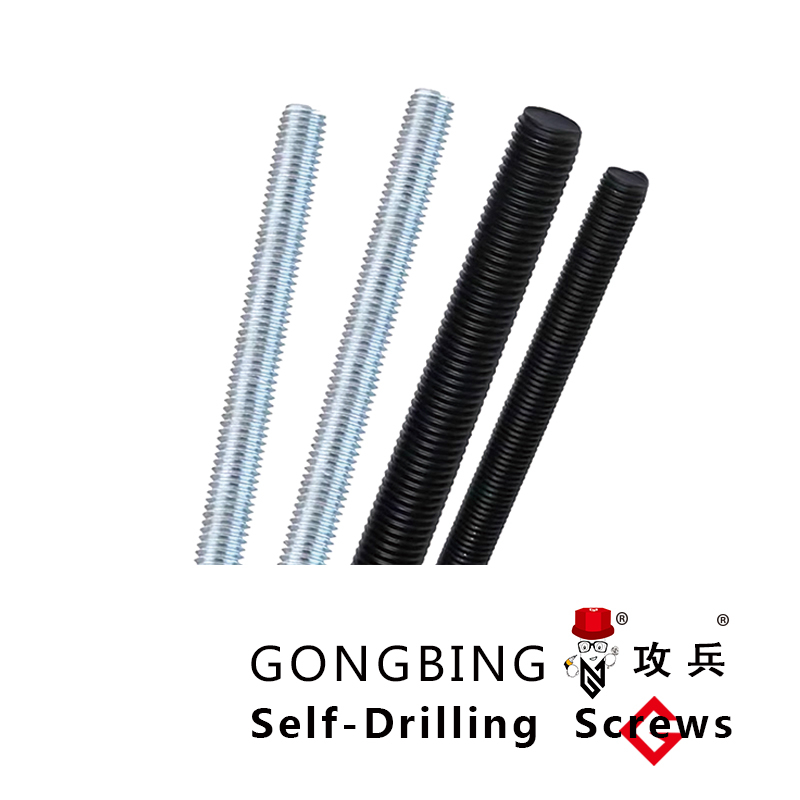Self-Drilling Screws with Integrated Washers for Secure Fastening Solutions
Understanding Self-Tapping Screws with Washers A Comprehensive Guide
Self-tapping screws are a vital component in many construction and manufacturing applications. Engineered for efficiency, these screws eliminate the need for pre-drilling, allowing them to create their own threads in various materials, including metal, wood, and plastic. When combined with washers, self-tapping screws enhance their functionality, ensuring a secure and reliable assembly. This article delves into the significance of self-tapping screws with washers, their benefits, applications, and best practices for their use.
What Are Self-Tapping Screws?
Self-tapping screws feature a sharp tip and a unique thread design that enables them to penetrate materials and form their own threads. Unlike traditional screws, which require a pilot hole, self-tapping screws save time and labor during installation. They are available in various head styles, drives, and coatings, making them suitable for a wide array of projects.
The Role of Washers
Washers are flat disks made of metal, plastic, or rubber that are used in conjunction with bolts and screws. When paired with self-tapping screws, washers serve multiple purposes
1. Load Distribution Washers help to distribute the load of the screw over a larger surface area, reducing the risk of damage to the material being fastened. This is particularly important when working with softer materials that may deform under the pressure of tightening.
2. Prevention of Loosening Washers can enhance the connection's integrity by providing friction. They can help prevent the screw from loosening due to vibration or movement, which is crucial in applications where structural stability is paramount.
3. Corrosion Protection In environments prone to moisture, washers can serve as a barrier between the metal screw and the material, minimizing the risk of corrosion. Certain washer materials, like rubber or nylon, can also provide additional protection.
Benefits of Using Self-Tapping Screws with Washers
Integrating washers with self-tapping screws enhances the performance of the fastening system in several ways
self tapping screws with washer

- Increased Strength The combination of the screw’s self-tapping action and the washer’s load distribution makes for a robust fastener system capable of withstanding various stresses.
- Improved Seal For applications exposed to the elements, using a washer can create a better seal, preventing moisture from penetrating through the fastening point. This is particularly beneficial in automotive and outdoor constructions.
- Versatility Self-tapping screws with washers can be used across a variety of materials and in different settings, from home improvement projects to industrial applications. They are commonly used in metal fabrication, construction, and automotive assembly.
Best Practices for Using Self-Tapping Screws with Washers
To ensure the efficacy of self-tapping screws with washers, consider the following best practices
1. Select the Right Size Choose the appropriate screw and washer size for your specific application. The diameter and thickness of the washer should complement the screw to ensure optimal performance.
2. Proper Installation While self-tapping screws do not require pre-drilling, it is essential to insert them at the correct angle (usually perpendicular to the surface) to ensure efficient threading and prevent material damage.
3. Material Compatibility Ensure that the materials of both the screws and washers are compatible with the environment. For instance, stainless steel screws and nylon washers are great for marine applications due to their corrosion resistance.
4. Torque Control Apply the correct torque when tightening self-tapping screws to avoid stripping the threads or damaging the materials.
In conclusion, self-tapping screws with washers form a powerful solution for a wide range of fastening challenges. Their combined benefits of strength, stability, and versatility make them indispensable in both home and industrial settings. Understanding their applications and best practices will help tradespeople and DIY enthusiasts alike achieve secure and lasting assemblies in their projects.
-
Weatherproof Plastic Expansion Anchors for OutdoorNewsJun.06,2025
-
Sustainability in the Supply Chain: Eco-Friendly TEK Screws ProductionNewsJun.06,2025
-
Load-Bearing Capacity of External Insulation FixingsNewsJun.06,2025
-
Double Head Bolts: Enhancing Efficiency in Industrial MachineryNewsJun.06,2025
-
Corrosion Resistance in Chipboard Screws: Coatings for Wholesale DurabilityNewsJun.06,2025
-
Butterfly Toggle Bolts : Enhancing Structural ResilienceNewsJun.06,2025
